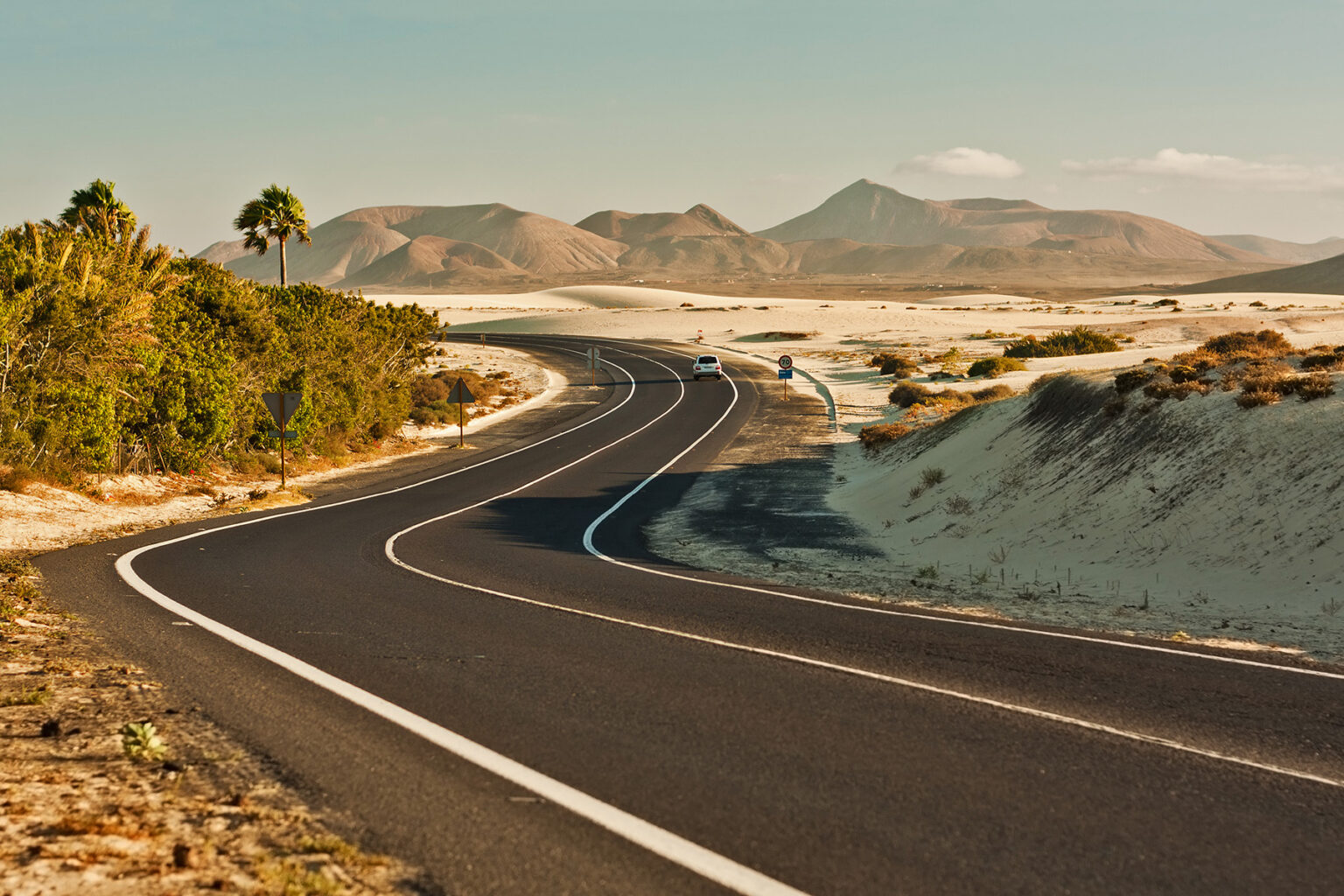One of the best things about Spain is its varied landscape and climate. It’s not just sun, sand, and sea. For example, you could cross arid deserts or cruise along low-lying coastal roads, and let’s not forget the hundreds of mountain passes. While the country has extensive public transport, there’s nothing quite like the open road. And no matter when the mood takes you, there’s always a road trip to suit you. Escape unpleasant weather in the winter by driving around the south of Spain, and explore the northern sights in the summer.
So pack up your car with the essentials, follow your intuition, and see where you end up. And if you’d rather plan your trip, check out these 10 top ideas for road trips in Spain.
- Ruta Vía de la Plata: Asturias – Andalucía
- Costa da Morte: Galicia
- Costa Brava: Lloret de Mar – Tossa de Mar
- Ruta de los Pueblos Blancos: Andalucía
- Vía del Cantábrico: País Vasco, Cantabria, Asturias and Galicia
- Valle del Jerte: Extremadura
- Ruta de los Molinos: Castilla-La Mancha
- Ruta de la Alpujarra de Granada: Andalucía
- Cabo de Gata: Almería, Andalucía
- Ruta Enoturística del Priorat: Tarragona, Cataluña
Groupon
Want to explore all the exciting things Spain has to offer but on a tight budget? Don't worry, Groupon is here to save the day! There are hundreds of incredible deals and discounts to be found on the website, including reduced prices on hotels rooms, tickets to popular tourist attractions, and more throughout the country. So go ahead and treat yourself!
Ruta Vía de la Plata: Asturias – Andalucía
The Ruta Vía de la Plata is the equivalent of the Americans’ Route 66 to the Spanish. If you haven’t done this route already, it’s definitely worth it. The Ruta de la Plata is almost 800km long, making it one of the longest highways in Spain.

Meaning ‘route of silver’ in English, it owes its name to the road constructed by the Romans between Mérida (Extremadura) and Astorga (León), which now joins Seville in the south to Gijón in the north. This road trip is a fantastic way to discover the beauty of Spain’s western region from top to bottom. Definite stopovers include Oviedo, León, Benavente, Zamora, Salamanca, Béjar, Plasencia, Cáceres, Mérida, Almendralejo, Zafra, and Seville.
Costa da Morte: Galicia
From Carballo (La Coruña) to the Cape Finisterre Lighthouse, the Costa da Morte (Galcian for Coast of Death), is one of the most beautiful routes for a road trip in northern Spain. It derives its name from the danger of its steep and rocky cliffs to those on land and at sea. Before, many fishermen lost their lives out at sea and many boats were destroyed. Due to this, the route is lined with dozens of lighthouses built in the 19th century to guide boats.
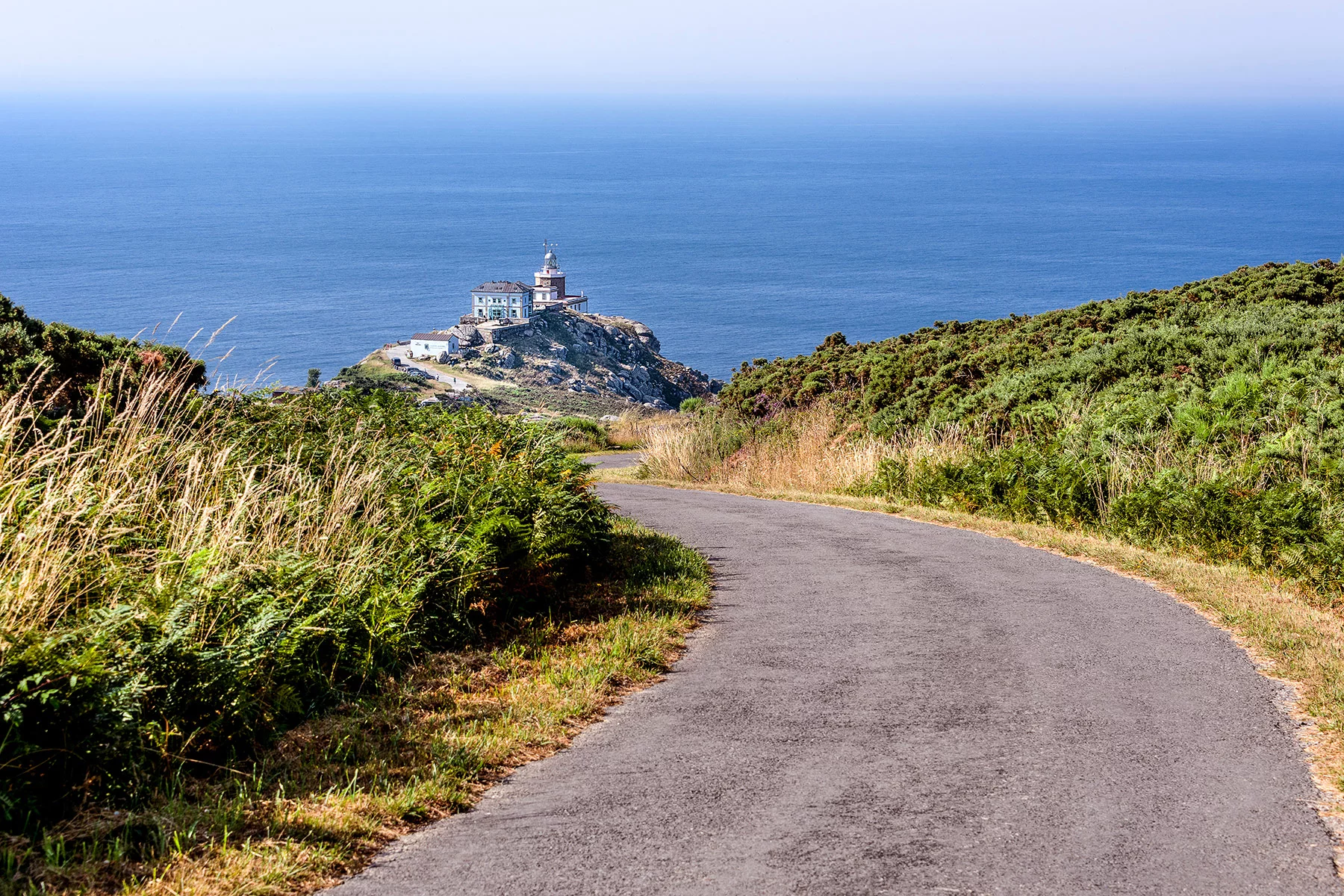
A great number of these lighthouses have been preserved. They’re popular among tourists, particularly those at Cabo Vilán or Finisterre — one of the most visited due to its name, which means ‘where the land ends’. This is one of the most popular routes with lengthy stretches of quiet beaches and excellent gastronomy.
Costa Brava: Lloret de Mar – Tossa de Mar
The sight of powerful waves crashing against silent rocks is just one of the many inspiring scenes to contemplate on the route between Lloret and Tossa del Mar on the Costa Brava. This picturesque journey is full of beautiful little coves that entice you to abandon your vehicle and explore them.
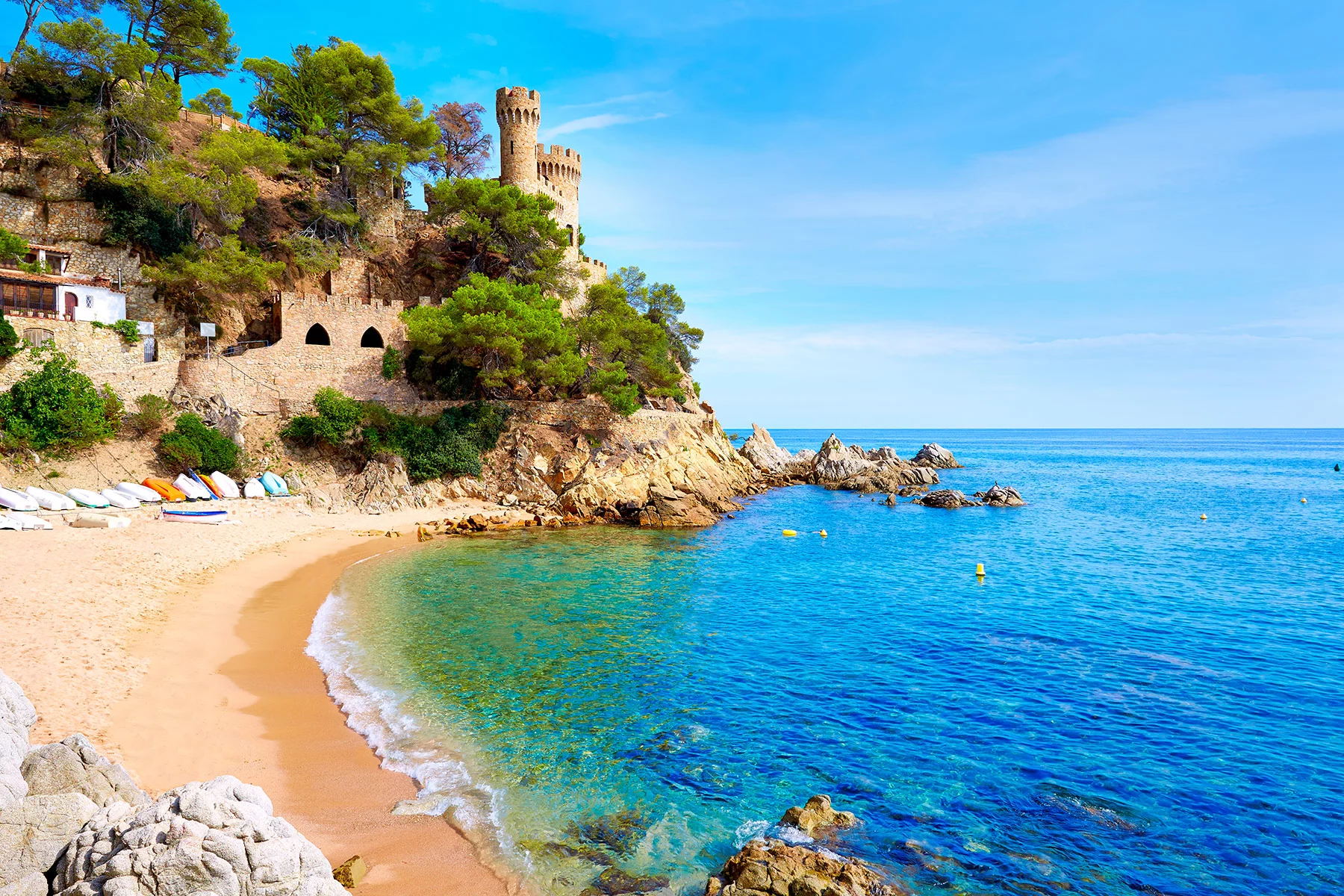
Make sure you’ve got something to take photos with, and that it’s fully charged. Some of these coves are accessible by crossing through pine forests, while you have to pass medieval castles and fortresses to get to others.
Ruta de los Pueblos Blancos: Andalucía
The almost blinding white exterior of the houses is what gave this part of the south of Spain its name: Ruta de los Pueblos Blancos (White Villages Route). Traveling this route means passing through 19 different villages located within the provinces of Cádiz and Málaga.
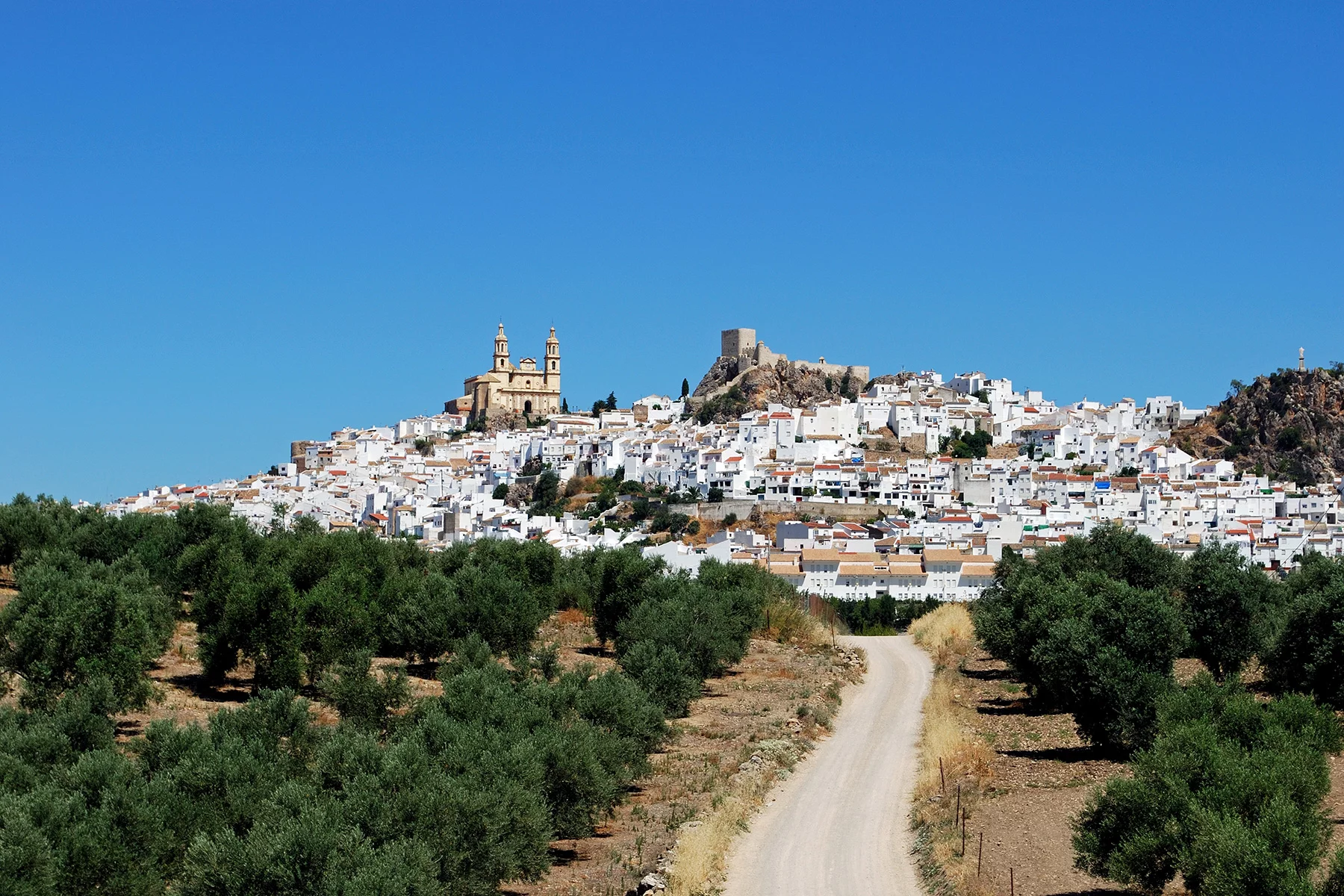
The colorful flowers that adorn the balconies of every house, together with the electric blue of the sky and the lush green of the Andalusian plain, create a scenery that has seduced both natives and foreigners alike. The combination of the great weather and the stunning natural surroundings not only makes this area perfect for practicing extreme sports, such as paragliding, but also gorging on first-class foods like olive oil and jamón serrano.
Vía del Cantábrico: País Vasco, Cantabria, Asturias and Galicia
If you have a few weeks to spare, this route takes you across the whole of northern Spain. From the beautiful Basque Country to Galicia, you’ll find exquisite landscapes of green countryside and hills along the way. There are also hundreds of villages dotting the landscape like Hondarribia, Luarca, San Vicente de la Barquera, or Viveiro.
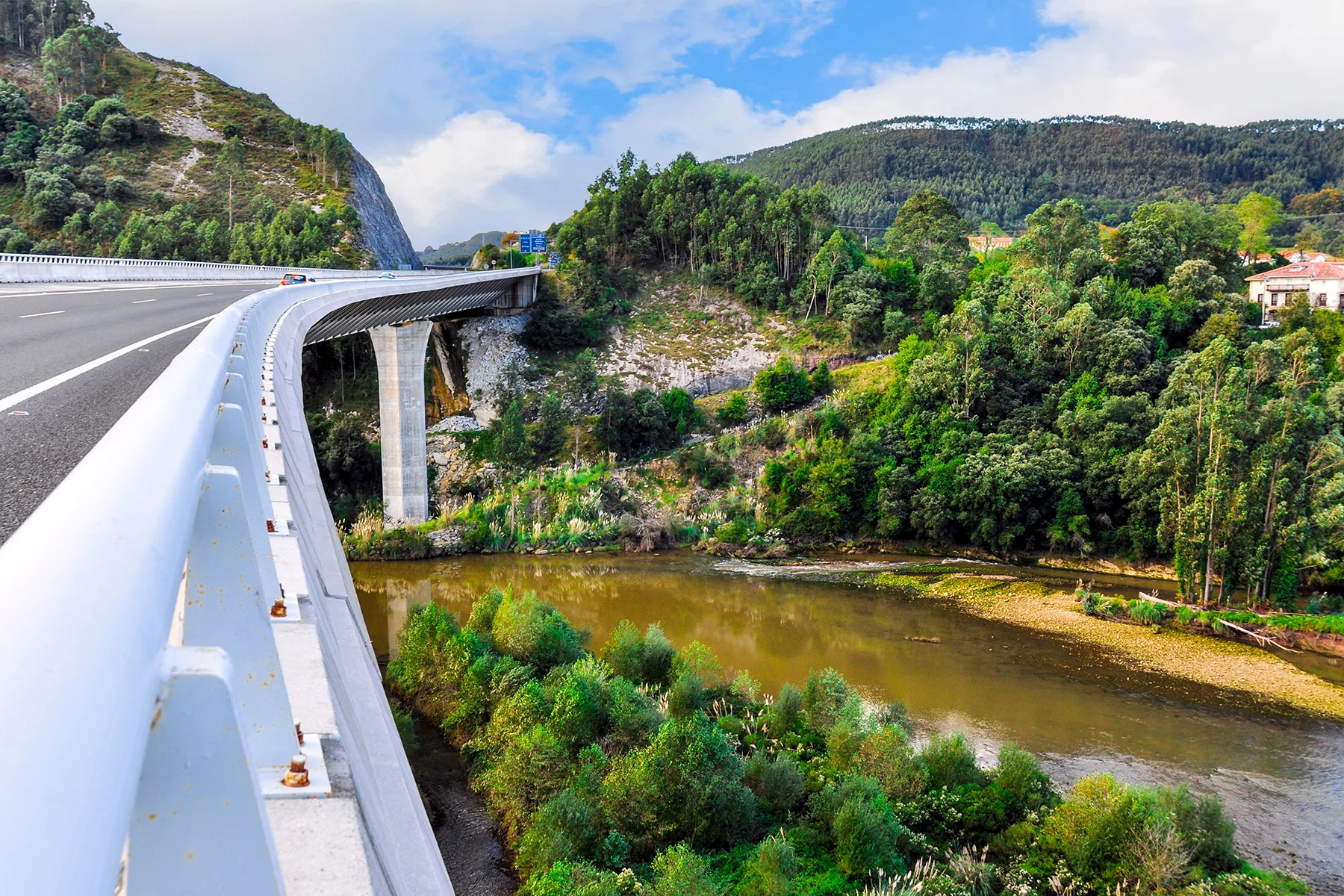
If you’re a fan of urban life, there are also plenty of provincial capitals to visit with monuments, museums, and delightful restaurants. For those that prefer the crème de la crème, the Basque Country is the best place to be for Michelin-starred restaurants; it has more than any other region in Spain.
Valle del Jerte: Extremadura
The Jerte Valley extends from Plasencia to Tornavacas, on the border of the province of Ávila. It’s an area of around 50km. Traveling it by car is extremely pleasant at any time of year. However, the best time to go is in the middle of April when all the cherry blossoms are in bloom.
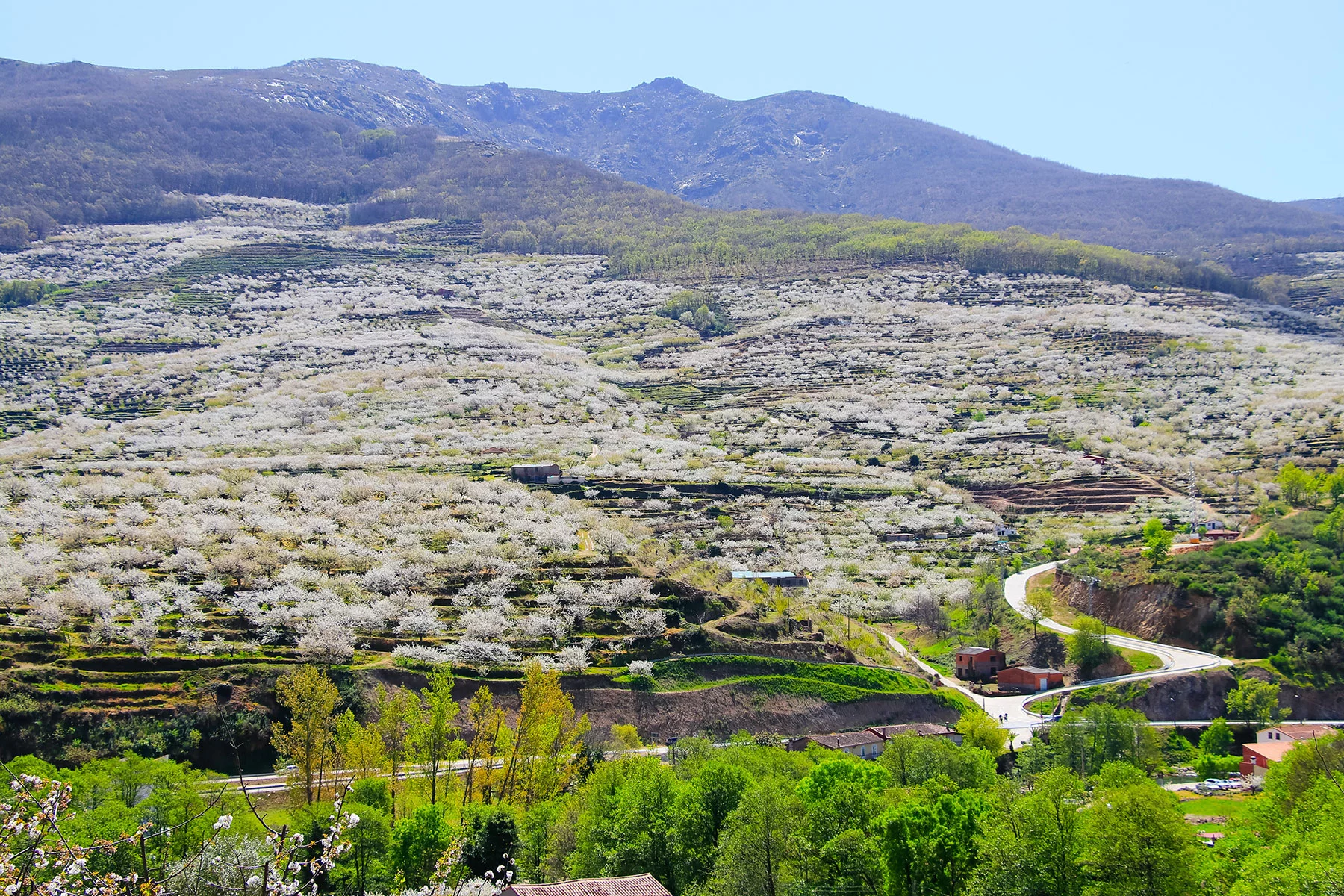
Villages like Navaconcejo or Cabezuela de la Sierra attract thousands of tourists who go to contemplate this spectacular feat of nature first-hand.
Ruta de los Molinos: Castilla-La Mancha
The inimitable novel by Miguel de Cervantes whose protagonist, Don Quijote, confused the windmills of La Mancha with threatening giants, is the reason that this route is one of the most popular with many road travelers, especially families. The villages along the route with the most number of windmills still standing to this day include Mota del Cuervo, Campo de Criptana, and Consuegra. Here you will find sceneries that are unique only to this part of the country.
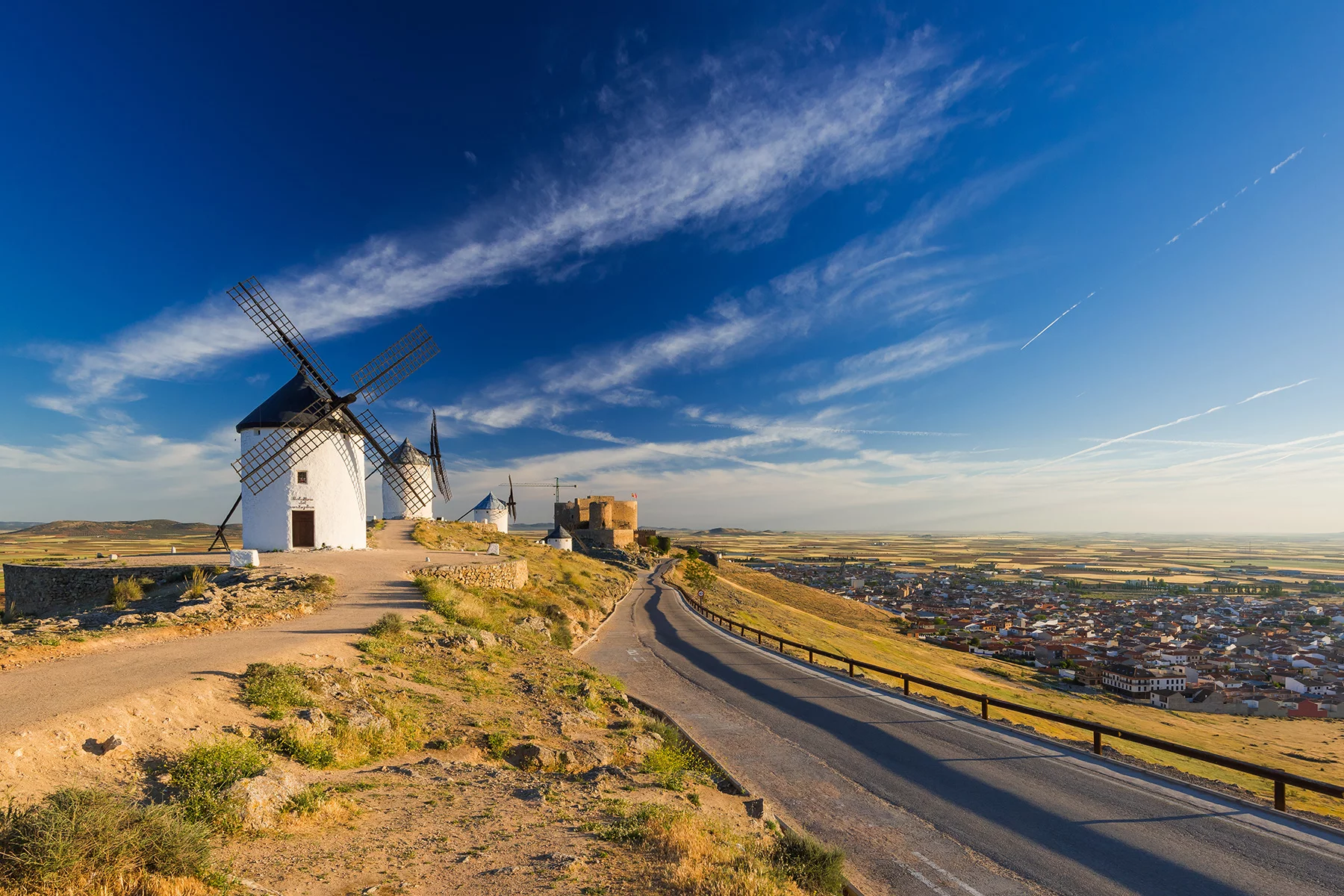
The rest of the countryside is stunning as you cross endless kilometres of La Mancha plains and small mountain ranges. There are plenty of monuments along this route that provide visitors with a wealth of information about the area’s history.
Ruta de la Alpujarra de Granada: Andalucía
The Alpujarra Route of Granada is one of the most visited routes of the area. Here, you’re not cruising along long motorways but meandering around winding roads that unite all the pretty villages together.
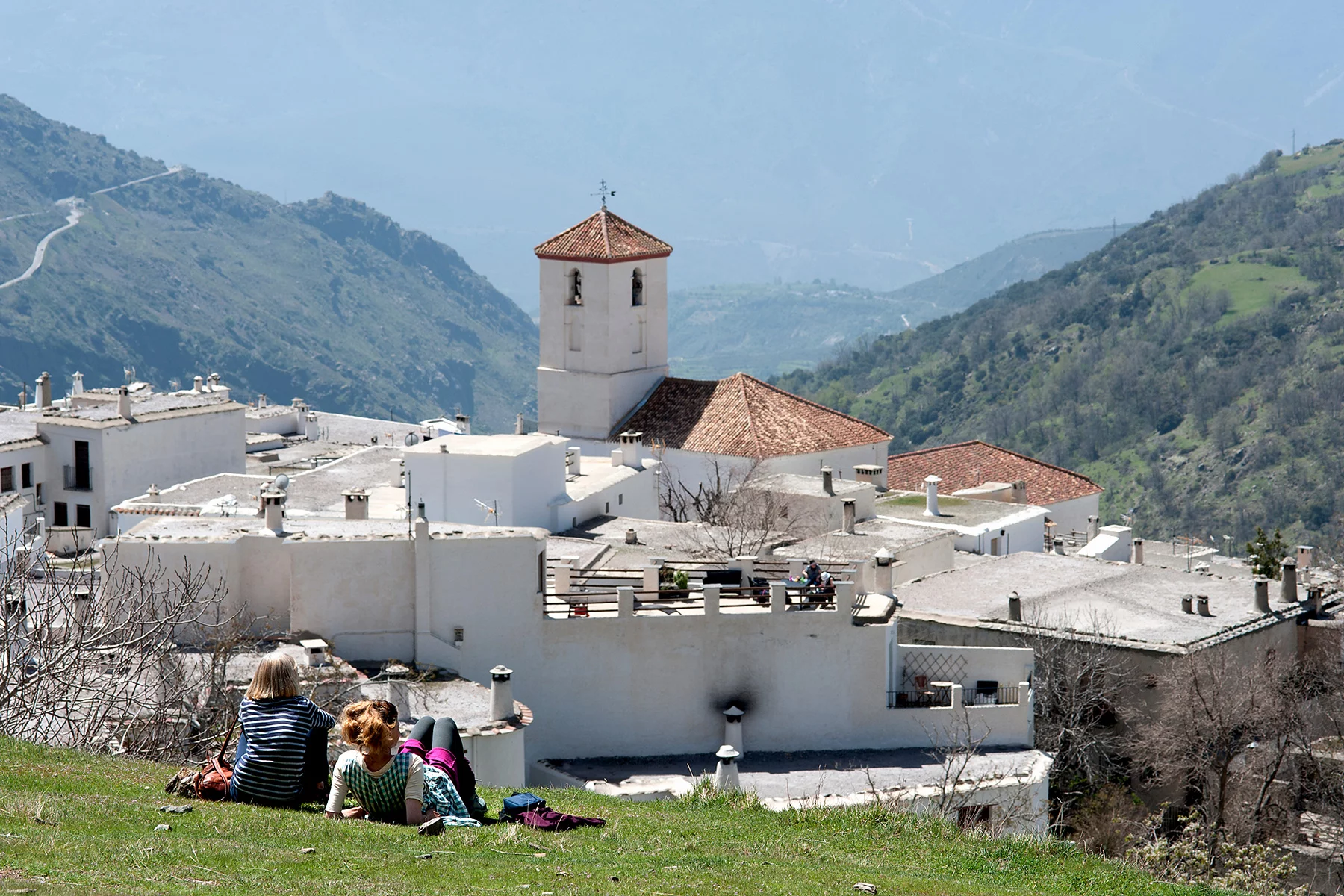
The route begins at the coast of the Mediterranean where the land is dry and arid; it ends at the fertile meadows of the River Genil, crossing deserts, oasis, almond tree orchards, and the highest mountain range of the Iberian Peninsula. It has some of the most unique sights, history, architecture and gastronomy in Spain.
Cabo de Gata: Almería, Andalucía
More than 60km of lighthouses, steep cliffs, inlets, caves, and beaches make up the Natural Park of Cabo de Gata-Níjar, a UNESCO Biosphere Reserve. It is actually one of the most arid spaces within the country and one of the driest in Europe.
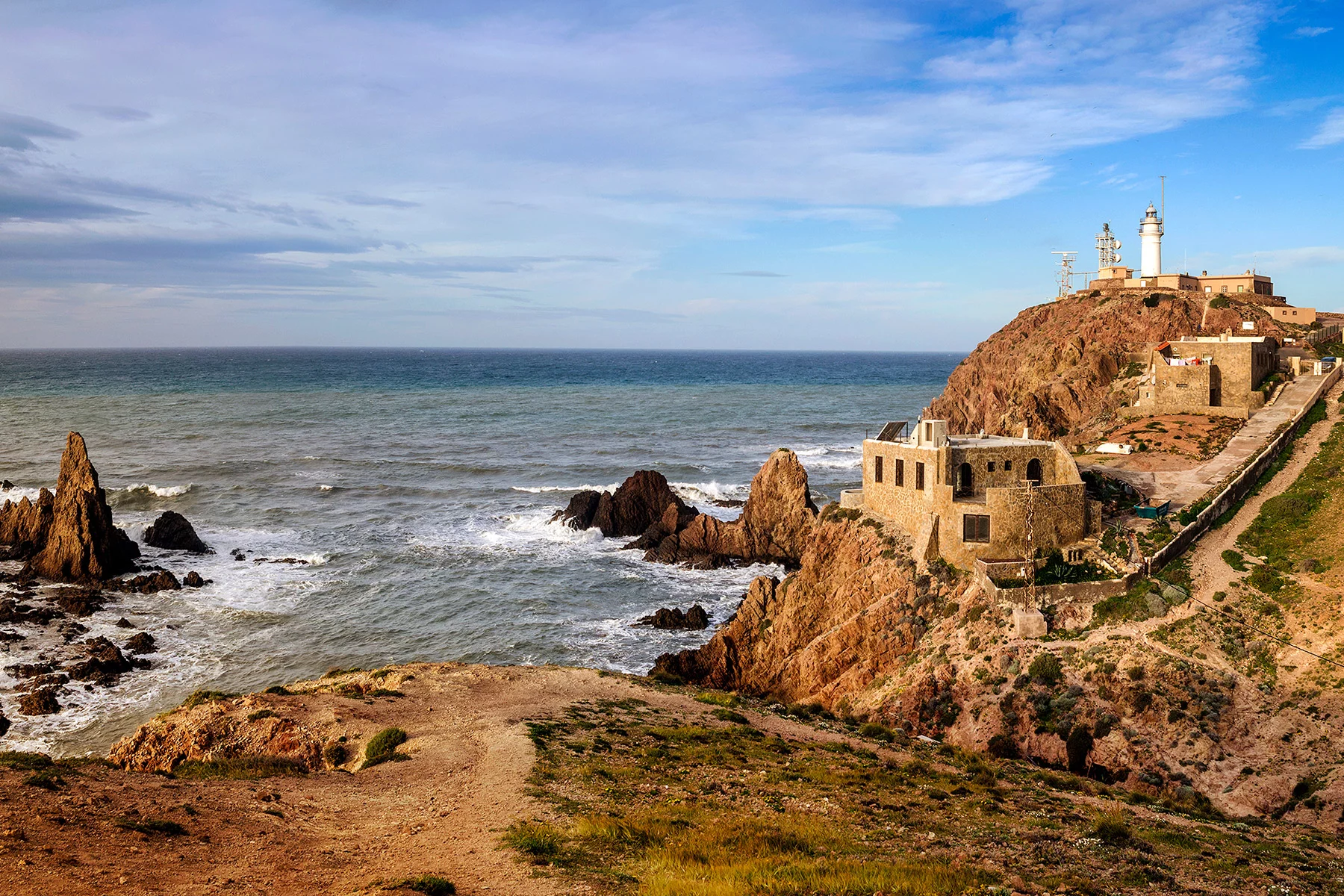
Nevertheless, it is still one of the richest areas of the Mediterranean coast in terms of marine and sea life. Cabo de Gata is a great area for divers, snorkelers, and lovers of sea life. It’s also ideal for those with a taste for all that comes from the sea and who like to see it on their dinner plate!
Ruta Enoturística del Priorat: Tarragona, Cataluña
Wine lovers will absolutely adore this route! It takes you through the stunning top-quality wine-producing region of Priorat, where vineyards are surrounded by hundreds of pine trees, small villages, and gushing streams of clear, running water. Wine is the common denominator that attracts tourism to the region. This route is in Cataluña, close to the Mediterranean. Despite its harsh environment, it is one of the most important wine-producing areas of the country.

